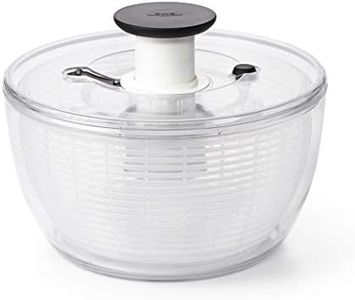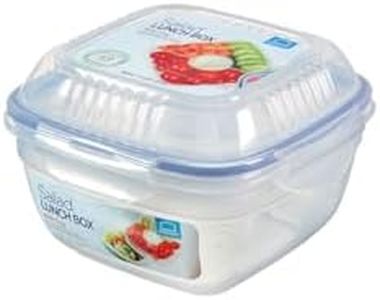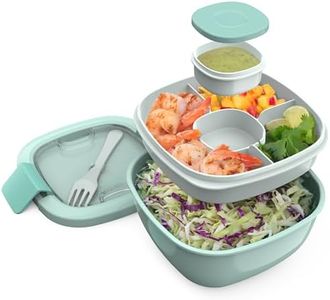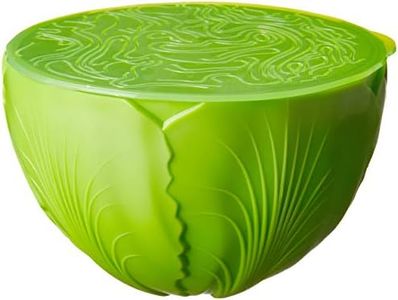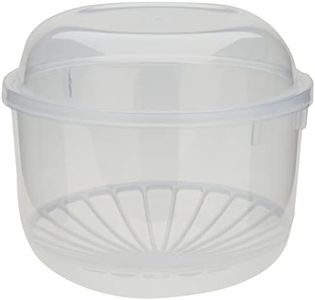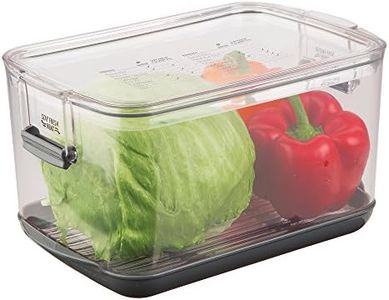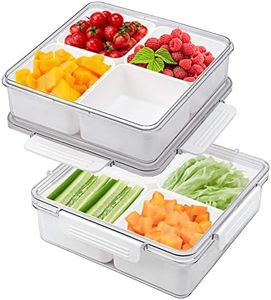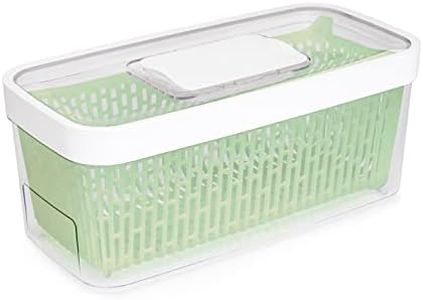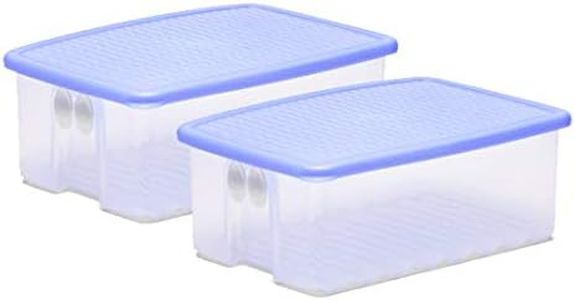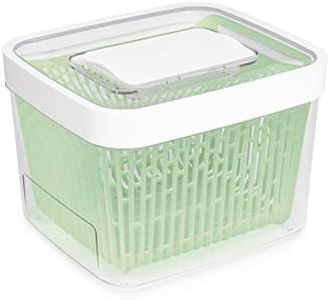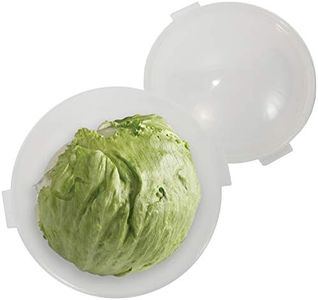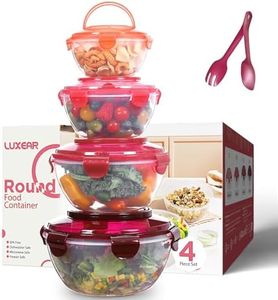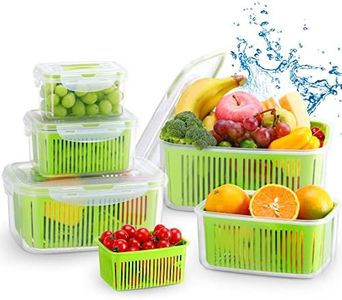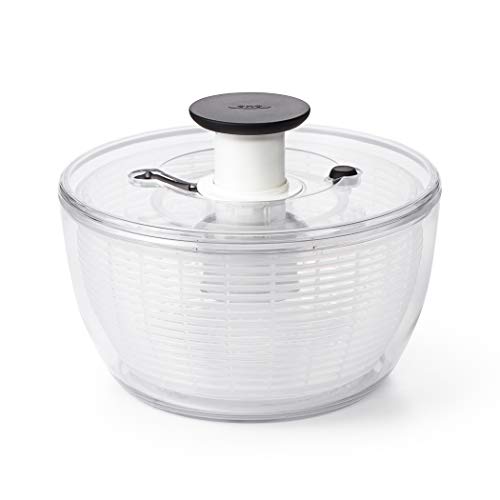We Use CookiesWe use cookies to enhance the security, performance,
functionality and for analytical and promotional activities. By continuing to browse this site you
are agreeing to our privacy policy
10 Best Salad Keepers
From leading brands and best sellers available on the web.Buying Guide for the Best Salad Keepers
Choosing the right salad keeper is all about keeping your greens and veggies fresh for as long as possible. With so many options out there, it's easy to get overwhelmed, but focusing on the key features will help you decide what works best for your needs. Think about your usual salad-making habits, the amount of produce you store, the space in your fridge, and whether you want something that's easy to clean or good for travel. By understanding the most important specs, you can pick a salad keeper that keeps food fresher, tastier, and reduces waste.Size and CapacitySize and capacity refer to how much salad or produce you can store in the container at once. This is important because having a keeper that's too big may take up unnecessary fridge space and make smaller portions spoil faster, while one that's too small will need frequent refilling and can't handle bigger salad batches. Sizes range from compact containers ideal for single servings or small fridges, to large bins meant for family-sized salads. Choose a size that matches how much salad you usually prepare and the space available in your fridge; if you prep salads just for yourself, a smaller one may suffice, but for households or meal prepping, go larger.
Ventilation and Moisture ControlVentilation and moisture control describes whether the salad keeper allows some air flow or has adjustable vents to help regulate moisture inside. This is important because too much moisture leads to soggy leaves, while too little can make greens wilt. The most basic containers don’t allow for airflow, which only works if you eat your salad quickly. Advanced ones often have humidity control vents or drainage trays to keep greens crisp. If you want your salad to stay fresh longer, look for keepers with adjustable vents or removable trays, especially if you store delicate lettuce or herbs.
MaterialMaterial means what the salad keeper is made from—commonly plastic, glass, or silicone. This matters for durability, ease of cleaning, and food safety. Plastic is lightweight and can be durable but varies in quality; ensure it's BPA-free if you're concerned about chemicals. Glass is heavier but more eco-friendly and doesn’t absorb odors, though it can break easily. Silicone is flexible but less common. Choose material based on how much you'll move the keeper around, your comfort with dishwashing, and any concerns about plastic.
Seal and Lid TypeSeal and lid type refer to how tightly the salad keeper closes, and whether it prevents leaks or airflow. This is important for keeping your greens from drying out or getting contaminated by fridge odors. Some lids snap or screw on for a tight seal, while others may have clips or latches. There are also lids with built-in colanders or draining mechanisms. If you plan to store salad for several days, a tight, reliable seal is crucial. For those transporting salads or storing liquids, look for leak-proof options.
Ease of CleaningEase of cleaning is about whether the components of the salad keeper can be easily washed by hand or in a dishwasher. This matters so that leftover bits don’t build up and affect the next batch of salad. Some keepers have many parts or complex vents, which can make cleaning tricky, while others have simple, smooth surfaces. Think about your willingness to do extra washing or whether you rely on the dishwasher—choose a salad keeper that fits your cleaning habits.
